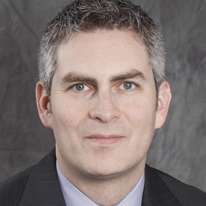
When you plan for retirement, what are the choices you need to make? Joel Kranc, author of Retirement Planning in 8 Easy Steps: The Brief Guide to Lifelong Financial Freedom, explains why your retirement planning should not always follow “rules of thumb.” Instead, you should base your retirement on personal choices. Discover the eight steps you need to take when you plan for retirement.
Are you worried in case there could be another economic crash like in 2008? Doug Goldstein, CFP®, who counseled his clients through the credit crunch, talks about how the central bankers handled the situation and what might happen next.
Read Doug’s review of Ben Bernanke’s book about the 2008 crash.
Follow Joel Kranc at http://kranccomm.com/ and on Twitter @kranccomm
Watch Retirement Planning in 8 Easy Steps on YouTube.
Read the TranscriptInterview with Joel Kranc
How are you supposed to plan for retirement? Joel Kranc, author of Retirement Planning in 8 Steps: The Brief Guide to Lifelong Financial Freedom, explains what you need to think about. How will your decision affect your family, and how do you know when it’s the right time?
Douglas Goldstein: I’m very excited to have, on The Goldstein on Gelt Show, Joel Kranc. He is the author of a book called Retirement Planning in 8 Steps: The Brief Guide to Lifelong Financial Freedom. His book is written in a very simple and easy to understand way. Joel, have you found your life as a writer and journalist that sometimes people take what could be simple and make it very complicated?
Joel Kranc: Absolutely. Something like retirement and financial planning is always very daunting to people. When it comes to money matters and what they don’t have versus what they do have, people tend to do things that perhaps are over-complicated.
Douglas Goldstein: What’s the first thing someone should do when he’s beginning to think about retirement?
What to Consider When You Are About to Retire
Joel Kranc: It’s a very personal question. Everyone is quite different in terms of their circumstances. Do they have big or small mortgages? Do they have child obligations? Do they have savings at work, savings that are personal accounts? Does it mean things like, “I no longer want to work,” or, “I want to work part time but I want to volunteer, or I want to travel?” These are the kinds of things people think about when they start thinking about retirement.
They have to look at their personal situations, what they are involved with, and what their obligations are. They should also consider what they want for themselves and their family in the future.
Douglas Goldstein: You are saying that you can’t just generalize and say, “Well, I’m going to stop working and then I’m going to be free,” because the question is what you do with that freedom?
Joel Kranc: That’s right. Everybody’s freedom looks different and everybody, in order to reach that goal, has different obligations to meet. Everyone has knowledge that they can use or not use that is specific to them.
Douglas Goldstein: These days, a lot of people have either children or parents who are not doing so well financially and they do feel an obligation. The obligation to help others in the family sometimes can impair a person’s ability to retire. What would you suggest? Should someone help out their kids when they retire?
Retirement and Family Obligations
Joel Kranc: It’s a good question but again, it’s personal. One should ask themselves, “Do I have the financial means to both retire and help my children?” or, “Do I have the financial means to only do one or the other?” and, “If I want to do one or the other, what are the goals, tools, and investment vehicles that I’ll need?”
You have to be open with your family, communicate properly with them, and tell them what you are capable of doing.
Douglas Goldstein: How ready are people for retirement when the time comes?
Are People Really Ready For Retirement?
Joel Kranc: A short answer to that is not very ready. I can add a few statistics to highlight that. About two years ago, the U.S. Federal Reserve put out a study on retirement readiness. The numbers showed that about 38% of the people surveyed said they would work as long as they possibly could or that they have no intention of retiring. That 38% are just going to keep working no matter what.
31% of non-retirees said they have no retirement or savings for a pension at all. A quarter of those people are 45 or older. Also, less than half of the people that even have savings or some kind of pension plan are even confident that they have the ability to make the right investment decisions or investment choices for retirement savings.
With all those numbers and stats, it’s safe to say that people are not very ready. Even if they’ve started saving, they don’t know what to do with those savings. As the generations get older, it becomes a more dire situation for those people.
Douglas Goldstein: I’m speaking with Joel Kranc, who has also written for CNN and Institutional Investor Magazine, as well as other periodicals both in the United States and in Canada.
One of the things you mentioned is that people talk about working longer. One of the things I’ve heard is that people often expect that they will work longer, but then as soon as they hit 65 or 67, the motivation begins to cease. Have you seen real changes in work habits and the way people are relating to their retirement?
Joel Kranc: If you think back to the ways in which our parents or grandparents worked and the types of jobs they had and the companies that they worked for, they would work one, maybe two jobs at most. They would stay in the same company or do the same work for about 25 to 30 years. At the end of that cycle, they often had what’s called a “defined benefit pension plan,” and that helped them in their retirement. One job, one retirement plan. If they have some personal savings and some government assistance, those three elements are often called the three-legged stool of retirement.
Today you have a much different situation. People change jobs very frequently and often have fewer or not as robust retirement options. They are expected to manage their own investment options or their choices with little or no knowledge about the market. You have more freedom in some respects, but often people don’t know what to do with that freedom or they are changing jobs so often they don’t even have a base to start from.
Douglas Goldstein: What are the eight basic steps for retirement that you talk about in your book?
Basic Steps for Retirement
Joel Kranc: Firstly, you have to assess your needs. It’s less strategy and more dreaming and thinking about what you want. You look at your goals and your desires, and you match them realistically against what finances you have. It’s just an assessment. It’s not a strategy nor a plan.
Secondly, build a plan. Think about a budget, if you will, and consider really where in your career you are and how much catching up you need to do in your retirement savings. Start from scratch if you haven’t started at all and look at how you determine your needs and your investments going forward.
Another thing you can do while you are building your plan is learning about different options that are out there. Whatever those tools or investments are, educate yourself and create your budget.
The third step is to invest wisely. After you have assessed your needs, and have built a plan, you need to invest those funds. The good news is that you have more choice and you have more freedom. The bad news is you have more choice and freedom.
A lot of people aren’t super savvy about their finances or about what the markets have to offer. There are many different investment vehicles. It could be mutual funds, stocks, real estate, IRAs, etc. One has to learn how to use those tools to generate wealth in their portfolio.
Douglas Goldstein: When investing, one must consider not only what they are investing in but also what their own limitations are. Often, I’ll tell people that there are many types of investment advisors. Some of them work with clients who are do-it-yourselfers. You go and you meet with someone like a certified financial planner who just gets you on track and then you go and take care of it on your own.
On the far other end of the spectrum are money managers. These ones handle everything for you. There are pros and cons to each of these models, but you have to find the model that fits who you are.
Joel Kranc: Knowing what you don’t know is as important as knowing what you know. If you are honest with yourself and you say, “Look, I don’t have the capacity to manage this or make the right decision,” you have to be honest about that and hopefully find the right person that can help you make those decisions.
Douglas Goldstein: I agree. Joel, how can people follow you, follow your work, and get a copy of the book?
Joel Kranc: I write a lot. You might see my name in places like Institutional Investor or Infrastructure Investor, or different periodicals that cover investments. I have a website called KrancComm.com. My book is also available on Amazon for anyone interested.
Douglas Goldstein: Joel Kranc, thanks so much for your time.










